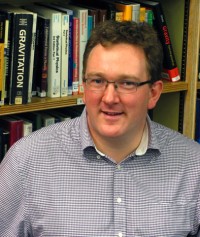Observatory spins out data analysis company

A spin-out company formed by staff at the Institute for Astronomy has secured a six-figure investment sum. The company will exploit patented software that was originally developed by the University to determine the age of stars. However the technology can be applied to many sectors where processing large amounts of data is routine, including seismic interpretation for oil and gas surveying, and fast image analysis for defence.
Blackford’s initial focus has been on medical imaging, where its technology can improve the diagnosis process for MRI and CT scans by automatically preparing images for radiologists.
Dr Ben Panter, CEO of Blackford Analysis, said: “The potential to save radiologist time is exciting. We already have concrete interest in further development from several significant industry players and there is similar potential in many other fields where large datasets require fast analysis.
“It’s been an exciting journey to get to this stage and we’re very pleased to secure this cash. Now we can really start to penetrate medical imaging and other markets.”
Blackford Analysis uses the MOPED algorithm, originally invented by Professor Alan Heavens of the Institute for Astronomy. Heavens and Panter’s work created a thousand-times increase in speed for the processing of galaxy spectra, and was used to determine the star formation history of the Universe.
Dr Panter said: “As datasets become larger, the cost of the hardware resources required to tackle them rocket and the case for MOPED is even more compelling. The MOPED algorithm vastly reduces that hardware cost, and the patented technology means that no other company in the world can do what Blackford Analysis can, solving emerging issues in an elegant and resourceful manner.”
A working demo of the product will be shown to potential customers at the Radiological Society of North America (RSNA) conference in November 2010.
Blackford Analysis is based at offices at The Royal Observatory on Blackford Hill.

